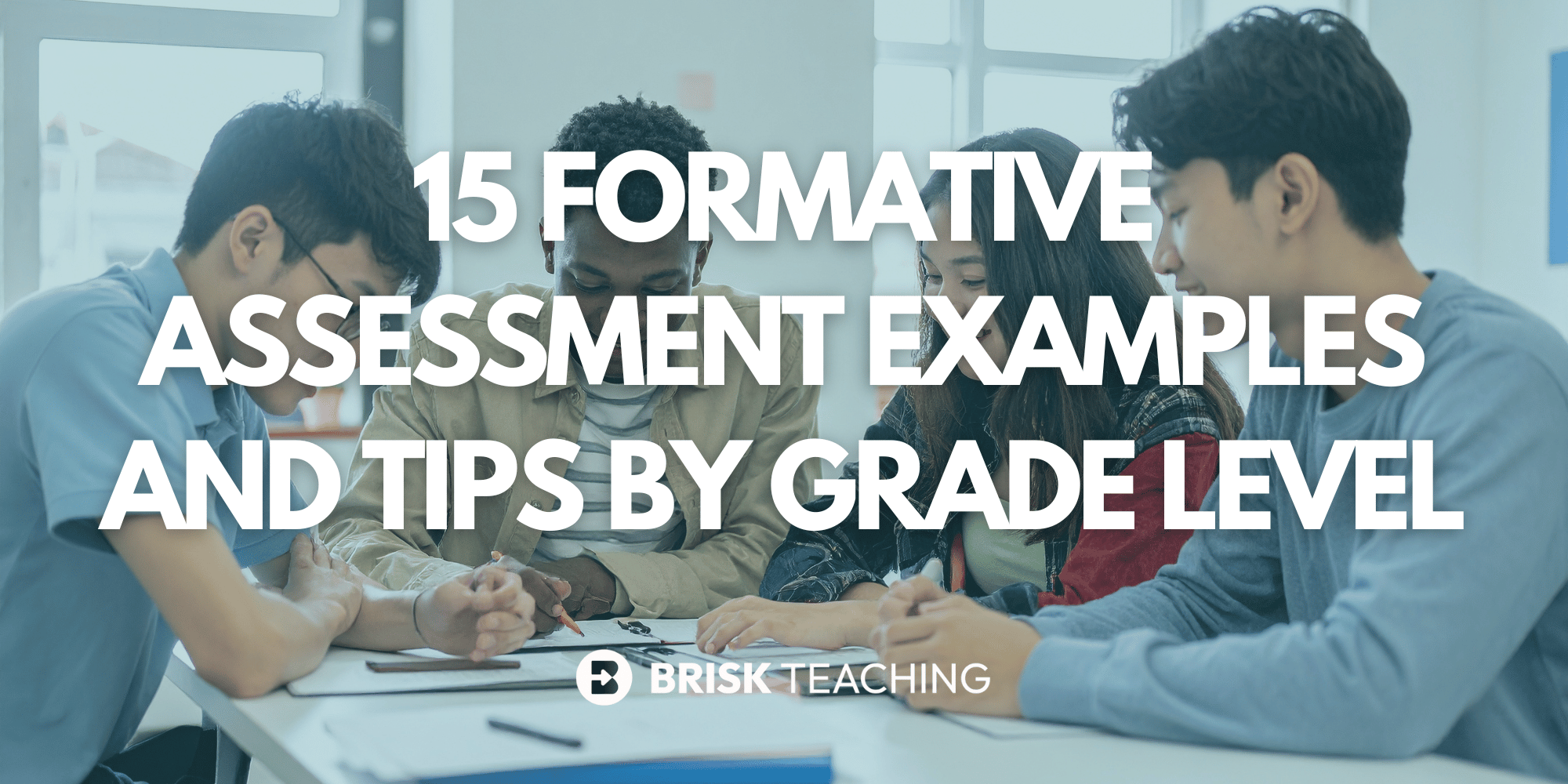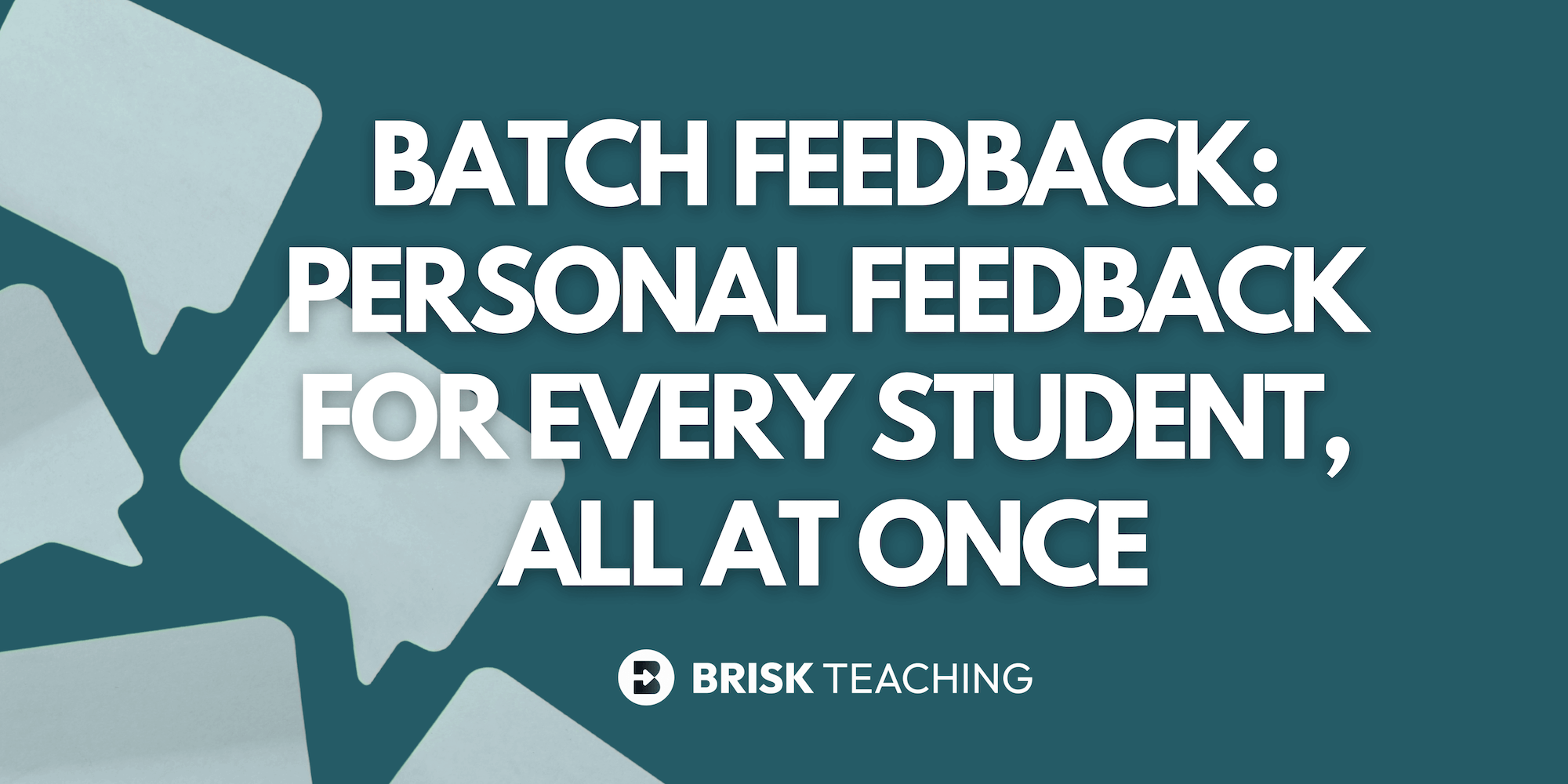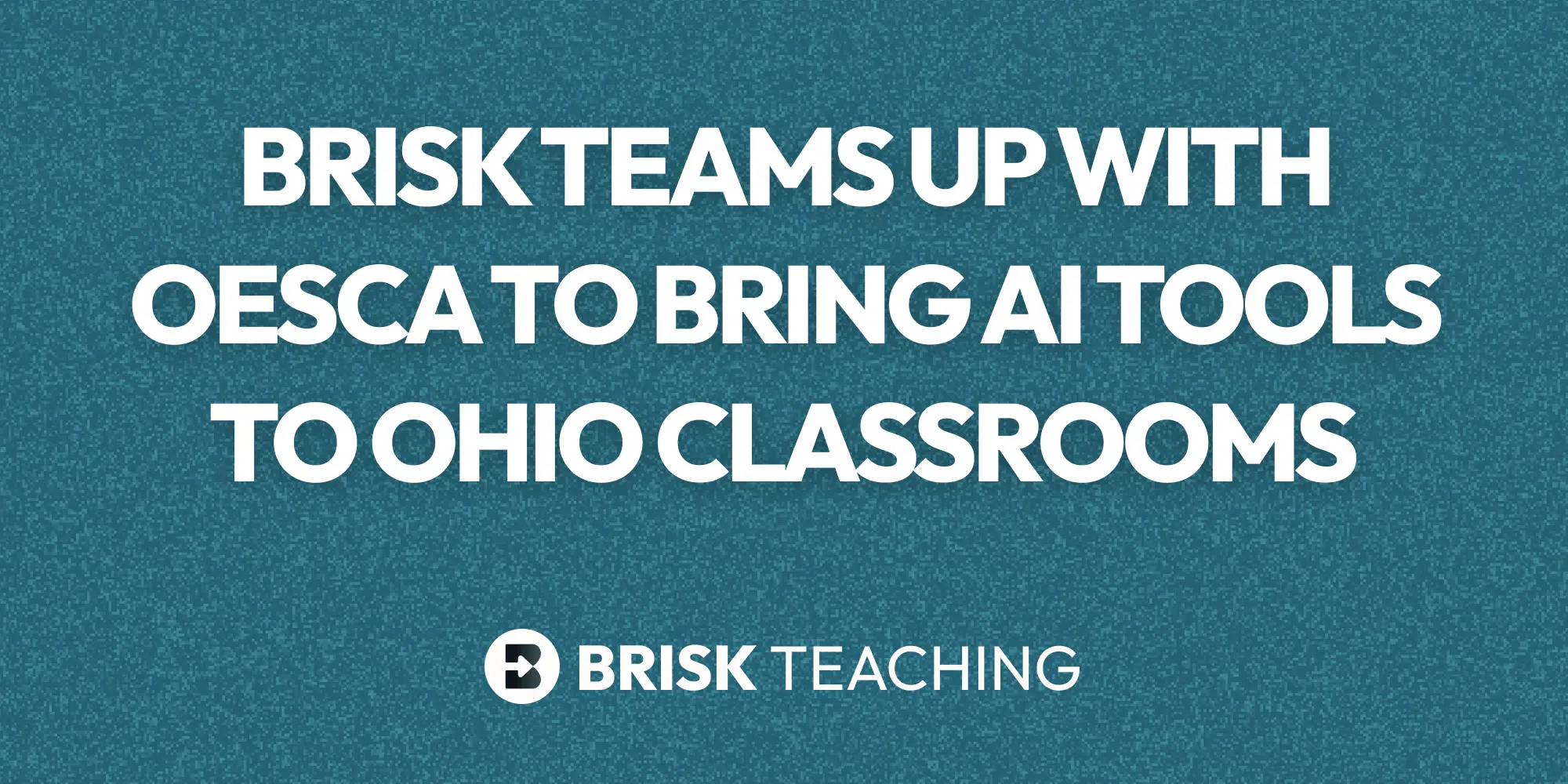Formative assessment happens in every classroom, every day. It shows up in small moments like a thumbs-up check, a quick exit ticket, or a one-minute reflection. These classroom assessment strategies are low-stakes, fast, and give you valuable feedback on where students are in the learning process.
So, what is formative assessment? Unlike summative assessments that measure learning at the end of a unit, formative strategies are ongoing. They help you see whether students are on track, what might need reteaching, and when it’s time to move ahead. That feedback is vital for student engagement and growth because when instruction adapts in the moment, learners feel more supported and successful.
Formative assessment does not need to be complicated. In this post, you’ll find 15 formative assessment examples by grade level — practical, student-centered ideas you can try tomorrow.
Why Formative Assessment Strategies Need to Match Grade Level
Why does grade-level differentiation matter so much for formative assessment strategies? Simply put, students learn best when assessments match their developmental stage. A first grader may thrive with hands-on exit tickets or picture-based checks, while high school students need more reflective, analytical prompts.
Using differentiated assessments ensures that every learner has an entry point into the content. The right approach keeps students engaged, builds confidence, and leads to stronger growth. This is the heart of student-centered assessment: meeting learners where they are and giving them feedback that moves them forward.
Brisk Tip: If adapting materials for every grade feels time-consuming, Brisk can instantly adjust texts and generate assessments, so you can focus on responding to what your students need most.
Fun and Simple Formative Assessment Examples for Elementary Classrooms
Elementary school is full of curiosity and energy, which makes it the perfect time to use formative assessment strategies that are quick, visual, and playful. These activities give you instant insights into student understanding while keeping kids engaged.
Try these five formative assessment activities for kids:
- Thumbs-Up/Hand Signals: A simple check-in where students respond to a question with a thumbs-up or thumbs-down. You can add more signals like “I’m not sure yet” or “I can teach a friend.”
- Exit Tickets (Elementary Style): Before leaving, students answer one or two quick questions on a sticky note or card. These exit tickets are fast to collect and give you a snapshot of who’s ready to move on.
- Fist to Five: Students show their level of understanding by holding up a number of fingers. A fist means “I need more help,” while five fingers signals “I’ve got it.”
- Comic Strip or Wanted Poster: Students draw what they’ve learned in a creative format. This works well in literacy, science, or social studies to show comprehension through pictures and words.
- Response Cards: Students use cards labeled with letters, colors, or symbols to respond to multiple-choice questions. This keeps everyone involved and gives you quick data at a glance.
Brisk Tip: These elementary formative assessments keep learning engaging while helping you catch misconceptions early. Need ready-made exit tickets or hand-signal slides? Brisk can generate them in seconds, so you can spend more time connecting with students. Start using Brisk for free today.
5 Interactive Middle School Formative Assessment Strategies That Work
Keeping middle schoolers engaged is no small task. That’s why middle school formative assessment works best when it’s interactive, fast-paced, and designed to hold attention. Here are five checks for understanding you can build into any lesson:
- Mini Whiteboards: Give each student a whiteboard and marker. Pose a question, give time to respond, and then have them hold up their answers. A quick scan tells you who is on track and who might need reteaching.
- Think-Pair-Share: Ask a question and let students jot down their own ideas first. Then, pair them up to compare answers before sharing with the class. This balances individual thinking with peer collaboration.
- Spot the Mistake: Provide a problem or passage with intentional errors. Students work solo or in groups to find and fix them. It reinforces accuracy while showing that mistakes are part of learning.
- Short Quizzes: A five-minute quiz, on paper or digital, is a low-stakes way to check comprehension. These quizzes build critical thinking and give you instant feedback.
- Quick Polls: Add multiple-choice questions into slides or digital tools to gauge understanding in real time. If most students miss a question, you know exactly where to reteach.
These formative assessments for middle school keep students active, curious, and involved in their own learning. The more chances they have to reflect, collaborate, and check their progress, the more confident they become moving into high school and beyond.
Peer Feedback and Writing Prompts: Formative Assessment for Teens
Getting a clear picture of student learning in high school takes more than a quick nod or head shake. Teens want to save face in front of peers, which is why high school formative assessment works best when it taps into reflection, writing, and peer-to-peer collaboration.
Here are five strategies to try:
- Quick Writes or “I Learned…” Reflections: Ask students to write a short response about what they learned in class. These prompts help them process content in their own words and make the learning stick.
- Peer Review with Rubrics: Give each student a rubric and pair them up to assess each other’s work. This makes grading more transparent and helps students explain concepts in student-friendly terms.
- Self-Assessment with Rubrics: Students grade their own work against the rubric, justifying their scores. It builds metacognition and holds them accountable for quality.
- Entry and Exit Slips: A question at the start of class activates prior knowledge, while an exit slip at the end captures what was most meaningful. These quick checks show you where to reteach or extend.
- One-Minute Papers: Students write continuously for one minute on a question or topic, recalling everything they know. It’s fast, low-pressure, and reveals gaps in understanding.
Brisk Tip: With Brisk Boost, students get a safe AI chat experience, from quick exit tickets to debates or character conversations, making formative assessments more interactive and engaging.
Formative Assessments by Grade at a Glance
Formative Assessment Tips: Best Practices Every Teacher Can Use
Even with dozens of formative assessment strategies out there, it helps to know the simple habits that make them effective. The good news? The best formative assessment tips are easy to put into practice and don’t require extra prep. Think of these as quick reminders:
- Keep it low-stakes and varied: Treat assessments as casual check-ins rather than high-pressure tasks. Mixing up activities keeps students curious and willing to show what they know.
- Rotate strategies to sustain engagement: Students lose interest if you use the same method every day. Switching strategies gives you richer information and keeps learners on their toes.
- Tie assessments to your objectives: The most effective formative assessments show whether students met the lesson’s goal. This gives both you and them a clear sense of progress.
- Create assessments without leaving your workflow: With the Brisk Extension, you can generate exit tickets, comprehension questions, or quick quizzes directly inside Docs, Slides, Word, or PowerPoint. No switching platforms, no extra prep — just a fast way to check understanding and keep the lesson moving.
- Use Brisk Next and Brisk Boost for seamless assessments: With Brisk Next, you can upload a lesson plan, article, or slideshow and instantly generate aligned quizzes, prompts, or exit tickets tailored to your students. Meanwhile, Brisk Boost gives students a safe, teacher-guided space to respond to those assessments interactively. Together, they create a feedback loop that’s easy for you to manage and powerful for student learning.
Your Next Step in Formative Assessment
Formative assessment isn’t about adding another task to your already full plate. It’s about making small, smart moves that give you a clearer picture of where students are and what they need next.
When you match strategies to grade level, you make learning more engaging and assessment more accurate. Start with one or two from this list and see how they shift your classroom flow.
And if you’re ready to make it even easier, Brisk helps you create assessments, quizzes, and feedback in minutes –– with the Brisk extension to build directly from your existing resources, with Brisk Next to generate and bundle new materials you can share, and with Boost to give students interactive ways to learn and respond. More time for teaching, less time on prep. Get started with Brisk today.
.webp)
.webp)






